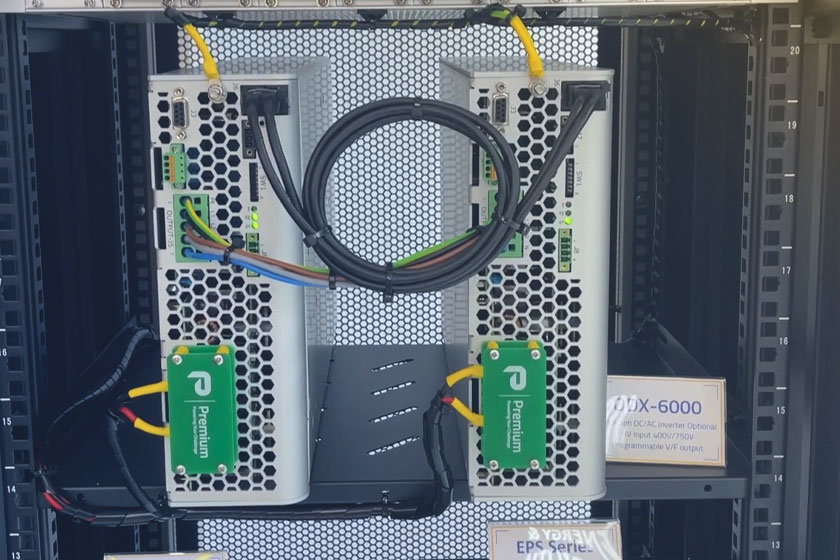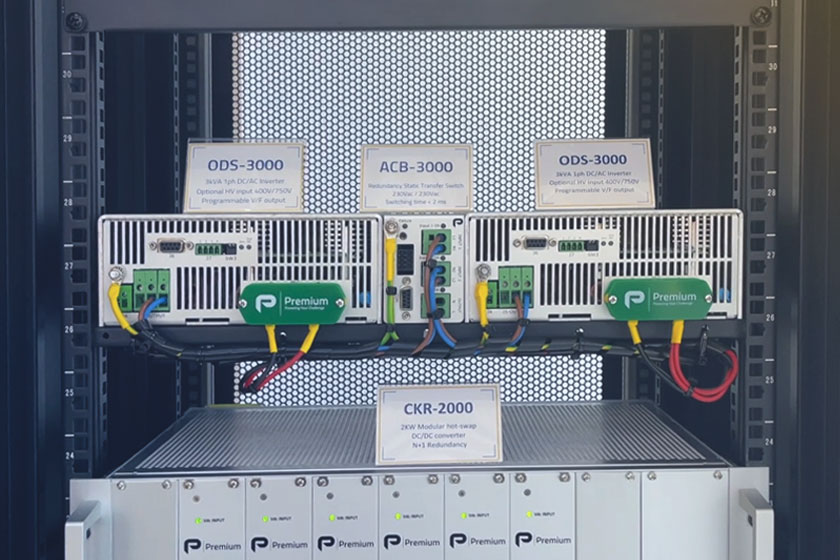Difference Between Parallel Connection and Redundancy in Power Conversion Systems
Power supply is a critical aspect of any system or machine, and ensuring a reliable power source is essential for uninterrupted operation. Two common solutions to achieve this are parallel connection and redundancy in power conversion systems. In this article, we will explore the definitions, differences, and correct use of both system types.
Maximizing Power and Minimizing Downtime
When it comes to power supply, two primary goals are maximizing total power and minimizing downtime. Parallel connection and redundancy address these goals in different ways.
Parallel connection involves connecting two or more power supply units of the same type in parallel to share the supply of a system or machine. By collectively supplying power, a higher total power can be achieved.
On the other hand, redundancy in power supply systems increases the reliability of the system or machine by installing additional power supply units as reserves. In case one unit fails, the remaining units maintain the system’s operation.
How Does Parallel Connection Work?
In a parallel connection, power supplies work together to provide the load current required by the system or machine. There are two types of parallel connection for power supplies: those with load sharing and those without load sharing.
Power supplies without load sharing do not ensure a balanced current distribution, which can lead to overload and overheating of a power supply. This can eventually fail the device. On the other hand, power supply units with load sharing ensure a balanced current distribution and prevent overloading of individual devices.
Load sharing can be achieved through active or passive means. Active load sharing requires connected control circuits to synchronize the output voltages among the power supplies, but this method is complex and susceptible to interference. Passive load sharing sets the output voltages to be as congruent as possible, allowing for a more balanced current distribution. While a perfectly balanced distribution may not be achieved, passive load sharing is reliable and cost-effective for most systems and machines.
An example is the ODX-6000 that is a high-power and high-density DC/AC inverter that uses silicon carbide (SiC) technology, providing up to 94.3% efficiency. The unit allows for up to 5 units to work in parallel, with a total power output of 30kW. It also offers adjustable output voltage and frequency, as well as the ability to start motors with a soft start based on voltage/frequency ramp-up. The ODX-6000 provides high input-output isolation of 3000Vrms and can be remotely controlled via RS-232.

Setting up a Parallel Connection Correctly
To achieve a balanced load between power supply units connected in parallel, the output voltages must be set as precisely as possible to the same value. It is recommended to use identical power supply units from the same manufacturer to ensure reliable adjustments and prevent unforeseen problems during operation.
In this video, we provide a step-by-step guide on how to connect inverters in parallel to increase power output and ensure redundancy in your power conversion system. We cover the necessary equipment, wiring configurations, and safety precautions to take during the installation process. Whether you’re a beginner or an experienced professional, this video will help you understand the principles behind parallel connections and how to implement them effectively. Watch now and enhance your knowledge of parallel inverter connections!
When setting up a parallel connection, it is important to arrange the power supplies next to each other rather than stacking them on top of each other. This helps minimize the risk of overheating. Additionally, the minimum spacing between the devices should be followed according to the installation manuals.
The Advantages of Redundancy in Power Supply Systems
Redundancy in power supply units focuses on the reliability of the power supply. By using more power supply units than required, a redundant system can continue to provide the total load even if one unit fails. This high availability is crucial for mission-critical applications where power supply failure is intolerable.
In a redundant power supply system, the units share the total load among themselves. If one of the units fails, the remaining units take over the load. To protect against backfeeding into a short-circuited power supply output, redundancy modules are used.
Redundant power supply systems are commonly used in industries such as automotive, where production shutdowns are costly, and the food industry, where downtime for cleaning and maintenance is time-consuming and expensive.

Premium PSU’s ACB-3000 power transfer switch converter provides redundancy in DC/AC inverters. Redundancy refers to the inclusion of backup components or systems to ensure uninterrupted operation in the event of a failure. In the case of the ACB-3000, it offers redundancy by providing protection against failure in one of the input lines. This means that even if one line fails, the converter can quickly detect the failure and transfer power to the backup line in under 2 ms, ensuring a continuous power supply to critical systems. This redundancy feature enhances the reliability of the ACB-3000 in demanding applications such as the railway and industrial sectors.
Types of Redundancy
There are several types of redundant systems to choose from, including the 1+1 and N+1 redundancy configurations.
1+1 redundancy requires two identical power supply units and one redundancy module. If one unit fails, the other takes over 100% of the load. This configuration is suitable for applications where a single unit failure can be tolerated.
N+1 redundancy involves installing one extra power supply unit as a reserve. The total load is shared among the power supply units, and if one fails, the remaining units can still provide the total load. This configuration offers higher availability and MTBF (mean time between failure). It allows for maintenance without interrupting the load, as modules can be powered down for servicing while the others continue supporting the load. An example of the N+1 redundancy is the single module FDS-3K.
Other Redundant UPS Configurations
Apart from parallel capacity and parallel redundant configurations, there are other options to consider, such as isolated redundant and distributed redundant systems.
Isolated redundant systems have a main UPS module that feeds the load, while the secondary UPS module feeds its static bypass. When a fault occurs, causing the primary UPS to transfer to bypass, the secondary module accepts the full load. This configuration provides additional reliability but differs from parallel-redundant N+1 installations.
Distributed redundant systems, also known as tri-redundant, are typically used in large multi-megawatt data centers. They consist of three or more UPS units with independent input and output feeders. The output buses are connected to the load by several power distribution units (PDUs), minimizing single points of failure and enabling concurrent maintenance. However, this configuration presents challenges in load management.
In summary, parallel connection and redundancy in power conversion systems offer different solutions for maximizing power and ensuring reliability. The parallel connection allows for a higher total power by connecting multiple power supply units, while redundancy provides high availability by using extra power supply units as reserves. Each configuration has its advantages and is applicable in different situations and industries.
At Premium PSU, we understand the importance of reliable power supply in industrial applications. With over 40 years of experience and a wide range of power solutions, we are committed to providing high-quality products and customized designs.
Contact our team for further information on our power supply solutions and how we can meet your specific requirements.





